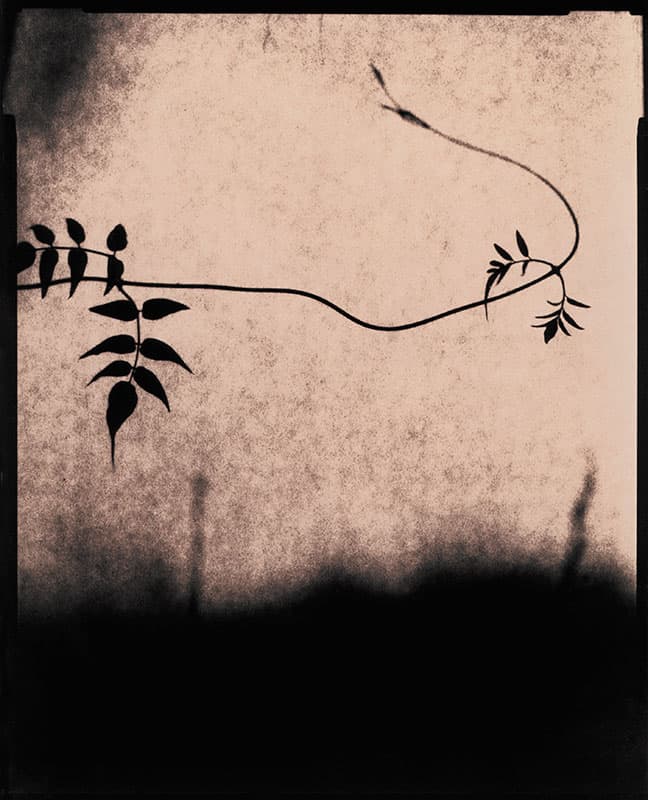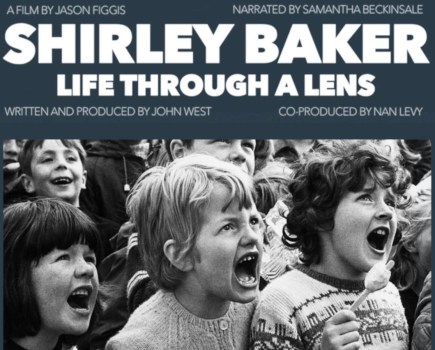Photo Insight with Andrew Sanderson

A renowned photographer, tutor, author and Ilford Master Printer, Andrew Sanderson offers practical tips on working with film and traditional darkroom techniques
This shot was taken around 13 years ago, when much of my time seemed to be spent running around after the children and picking up toys. I’m sure it’s a scenario any parent of young children can relate to. At that time, I was necessarily producing a lot of photography around the home and I learned that just because you’re faced with familiar surroundings, it doesn’t mean you can’t produce worthwhile images. When you look through the viewfinder and isolate certain areas, they become something in themselves.
I ended up producing a book on the subject called Home Photography, which included a lot of the material I had produced during that time. This is one of those images from that period. We used to have a beautiful jasmine plant on the kitchen windowsill that had lovely shapes and curves. It had a real graphic character. I had already photographed it on a number of occasions, but this time I used a 5x4in camera and a single sheet of white paper in the background. That’s where the mottling texture comes from. The plant is silhouetted against that surface and you can also see parts of the garden just out of focus in the background. This is the result of the image being shot with a wide-open aperture. I then printed up the shot as a lith print, hence the unusual colour cast.
Initially, it was the shapes that drew me to the image. There’s a lovely curve in the stem on the right-hand side that forms a little arch through which the stem travels in mid-air. It’s those simple graphic shapes that really appeal to me. I also appreciate shadows and silhouettes, and those elements always feature strongly in my work. In this image there is the graphic nature of the plant and then the abstract nature of the background coming together to form one overall image.
Lith developer was originally made for processing a particular type of film that produced high-contrast negatives. It was used in the graphic arts industry for copying things such as lettering and line drawing. It’s a very active and vigorous developer, and that’s what creates such a high contrast.
When lith developer is greatly diluted it works in a very different way. You expose the print – I believe it’s around 10x the exposure you’d give a standard print – and put it in the lith developer. It takes a long time for the print to come through, sometimes up to 20mins. Something then occurs on the chemical level, which accelerates the rate of the developer. The development then becomes faster and faster, and before you know it the blacks come in. You have to take it out of the developer quickly and place it in the stop bath to arrest the development and keep it at that point.

The result is a beautiful separation between dark blacks and creamy highlights. It is important to pull the print out of the developer at exactly the right time, at something known as the ‘snatch point’.
The first lith prints I ever saw were produced by Bob Carlos Clarke. He really mastered the technique and knew exactly how to achieve the desired images. He experimented with lots of different types of paper and achieved some extraordinary prints.
Talking about lith prints really hammers home my love affair with alternative processes. I’ve always found it odd that I could produce images using large-format cameras and the photographs would be sterile and a little boring, yet a drop in the technical quality gives a significant increase in aesthetic quality. I think the reason for this is because your imagination makes up the difference. That’s when magic and mystery come into the process. Somehow, it brings the image to life.
The joy of this image of jasmine is that we have the silhouette against an abstract background that has a series of shapes and hill-like formations. The image is suggestive: it doesn’t spell things out in the same way as a large-format negative would. When there’s too much detail, your eye tends to move all over the place. Sometimes detail can actually be a distracting element.
Andrew Sanderson was talking to Oliver Atwell

If you would like to read more about paper negatives, Andrew’s book Paper Negative Photography is available from www.blurb.com, price £15







